Historical sites in Greece are vital for understanding ancient cultures and architectural innovations. This article explores their significance, preservation efforts by the Greek Ministry of Culture, and the challenges photographers face in capturing their beauty. Key sites like the Acropolis and Delphi highlight the rich heritage while emphasizing the need for sustainable conservation practices. Visitors must navigate preservation laws and crowds to successfully document these historical treasures.
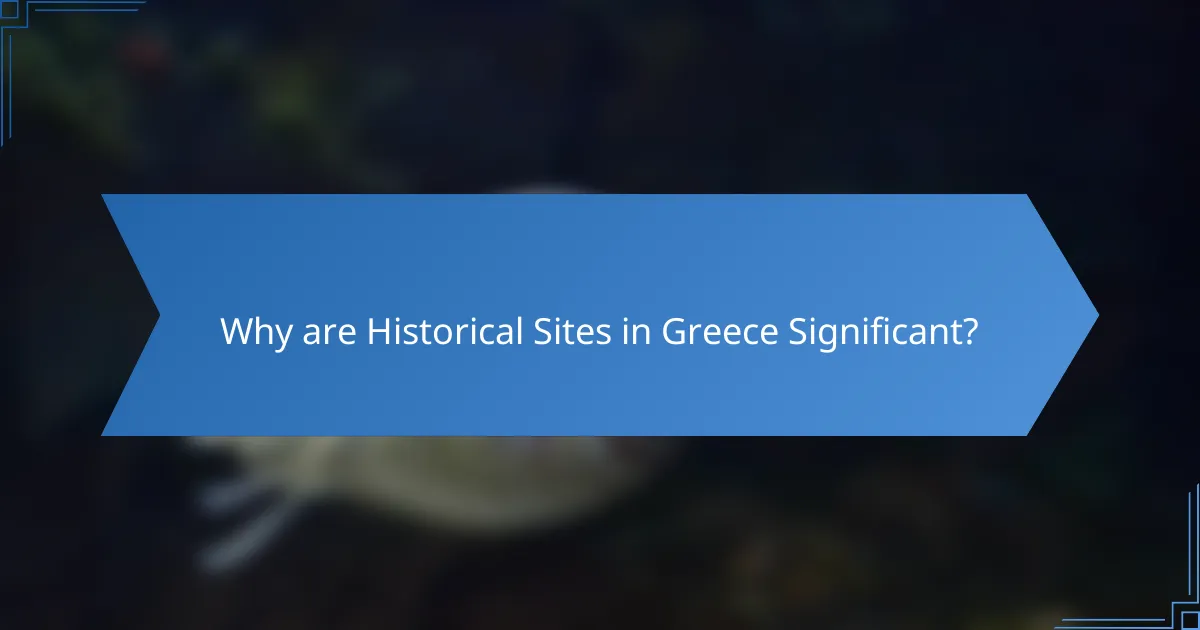
Why are Historical Sites in Greece Significant?
Historical sites in Greece are significant due to their rich cultural heritage and historical value. These sites, such as the Acropolis and Delphi, provide insights into ancient civilizations, architectural advancements, and religious practices. They attract millions of tourists annually, contributing to the economy and fostering a sense of national identity. Preservation efforts are crucial as many sites face threats from pollution and urban development. Additionally, photography challenges arise from the need to capture these sites while respecting their historical context and the surrounding environment.
What Cultural Heritage Do They Represent?
Historical sites in Greece represent rich cultural heritage, showcasing ancient civilizations and architectural achievements. These sites, such as the Acropolis and Delphi, reflect Greece’s historical significance and influence on Western culture. Preservation efforts are crucial to maintain their integrity, while photography challenges arise due to environmental factors and visitor impact.
How Do They Reflect Ancient Civilizations?
Historical sites in Greece reflect ancient civilizations through their architecture, cultural significance, and historical context. These sites, such as the Acropolis and Delphi, showcase advanced engineering and artistic achievements. They serve as tangible connections to Greek history, illustrating societal values and beliefs. Preservation efforts highlight the importance of maintaining these sites for future generations, while photography challenges arise from capturing their grandeur amidst modern developments.
What Role Do They Play in Modern Greek Identity?
Historical sites play a crucial role in modern Greek identity by embodying cultural heritage and national pride. These sites, such as the Acropolis and Delphi, connect contemporary Greeks to their ancient history. Preservation efforts are vital for maintaining these landmarks as they face challenges like urbanization and climate change. Additionally, photography of these sites highlights their beauty but can be hindered by accessibility and preservation restrictions. These elements collectively reinforce Greece’s unique cultural narrative and identity.
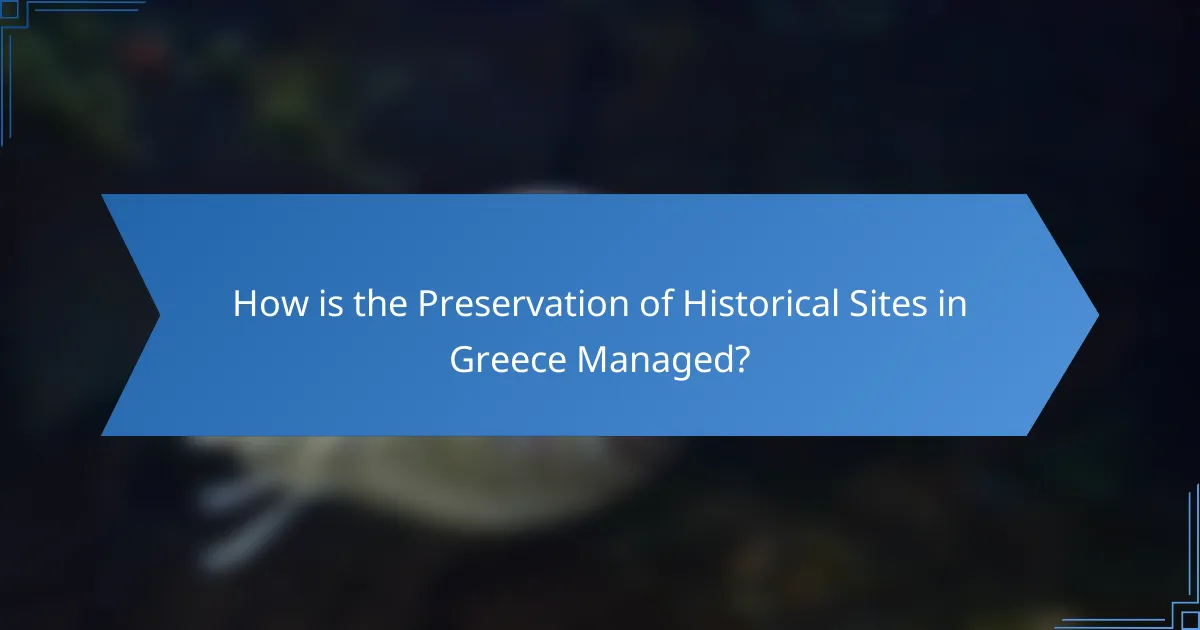
How is the Preservation of Historical Sites in Greece Managed?
The preservation of historical sites in Greece is managed through a combination of government policies, international cooperation, and community involvement. The Greek Ministry of Culture oversees the protection and maintenance of these sites, ensuring adherence to UNESCO guidelines. Preservation efforts include restoration projects, regular inspections, and public awareness campaigns. Local communities often participate in preservation initiatives, fostering a sense of ownership and responsibility. Additionally, funding from the European Union supports various conservation projects, enhancing the sustainability of historical sites.
What Organizations Are Involved in Preservation Efforts?
Various organizations are involved in the preservation of historical sites in Greece. Key entities include the Greek Ministry of Culture, which oversees national heritage, and the Hellenic Ministry of Tourism, promoting sustainable tourism practices. Additionally, UNESCO plays a crucial role in protecting World Heritage sites. Local non-profits, such as the Society for the Protection of Ancient Greece, actively engage in restoration and advocacy. International partnerships with organizations like the World Monuments Fund enhance preservation efforts through funding and expertise. These collaborations aim to safeguard Greece’s rich historical legacy for future generations.
Which Strategies Are Effective for Maintaining Integrity?
Effective strategies for maintaining the integrity of historical sites in Greece include strict regulations, community involvement, and advanced technology. Regulations ensure protection against unauthorized alterations. Community engagement fosters local pride and stewardship, enhancing preservation efforts. Advanced technology, such as 3D scanning, aids in monitoring and restoration. These approaches collectively safeguard the significance of Greece’s cultural heritage.
What Challenges Do Preservationists Face?
Preservationists face numerous challenges in maintaining historical sites in Greece. These include funding shortages, environmental threats, and tourism pressures. Limited financial resources hinder restoration efforts, while natural disasters and climate change pose risks to structural integrity. Additionally, high visitor volumes can lead to wear and damage, complicating preservation efforts. Collaborative strategies involving local communities and stakeholders are essential for overcoming these obstacles.
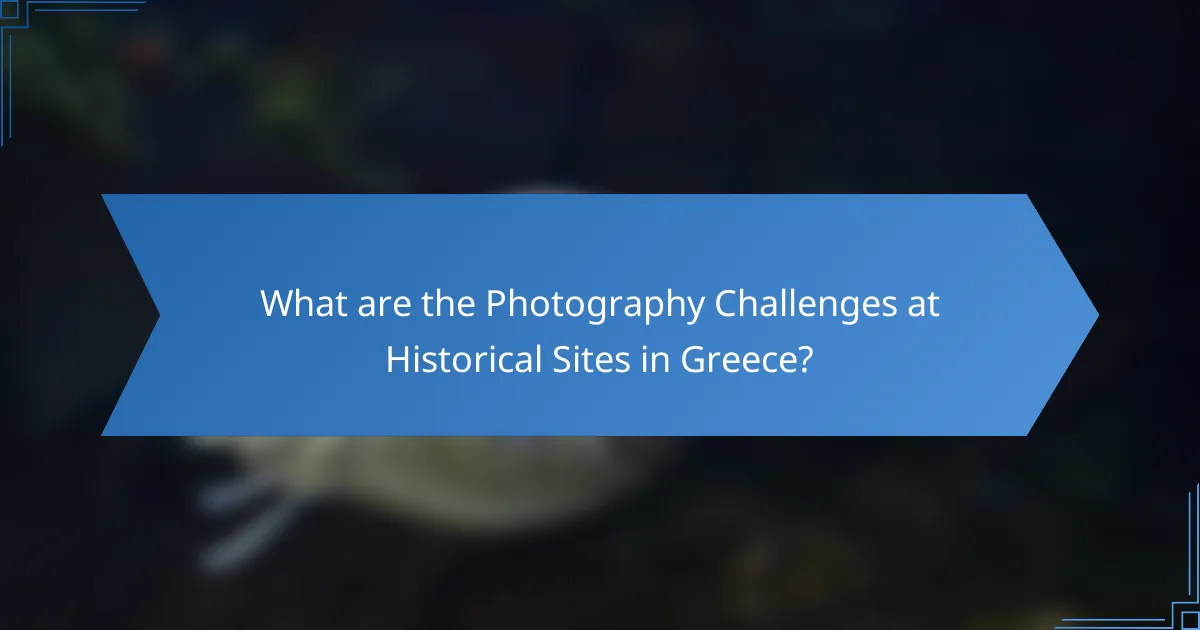
What are the Photography Challenges at Historical Sites in Greece?
Photographers face several challenges at historical sites in Greece, including lighting conditions, preservation restrictions, and crowds. Lighting can vary dramatically, affecting the quality of images. Preservation laws limit access to certain areas, impacting composition choices. Crowds can obstruct shots and require strategic timing for clear photographs. These challenges necessitate careful planning and adaptability.
How Do Lighting Conditions Affect Photography?
Lighting conditions significantly impact photography by influencing exposure, color accuracy, and mood. Natural light varies throughout the day, affecting how historical sites in Greece appear in photographs. For example, golden hour light enhances textures and colors, while harsh midday sun can create unflattering shadows. Additionally, overcast skies can provide soft, diffused lighting, ideal for capturing details without glare. Photographers must adapt to these conditions to effectively showcase the significance and preservation of Greece’s historical sites.
What Restrictions Exist for Photographers?
Photographers face several restrictions at historical sites in Greece, primarily aimed at preserving cultural heritage. These include limitations on equipment, specific areas where photography is prohibited, and guidelines regarding flash usage.
Many sites require permits for professional photography, especially for commercial purposes. For instance, the Acropolis has strict regulations against tripod use to prevent damage to ancient structures. Additionally, some sites may restrict photography during certain hours to manage visitor flow and maintain a serene environment.
These restrictions are essential for protecting Greece’s rich historical narrative while allowing photographers to capture its beauty responsibly.
How Can Photographers Capture the Essence of These Sites?
Photographers can capture the essence of historical sites in Greece by focusing on their architectural details, cultural significance, and the interplay of light. They should consider the unique attributes of each site, such as the Parthenon’s Doric columns or the intricate mosaics of Pompeii, to convey their historical narratives. Utilizing natural light during golden hours enhances textures and colors, adding depth to images. Additionally, understanding the preservation challenges faced by these sites informs photographers on how to respectfully document their beauty while promoting awareness of conservation efforts.
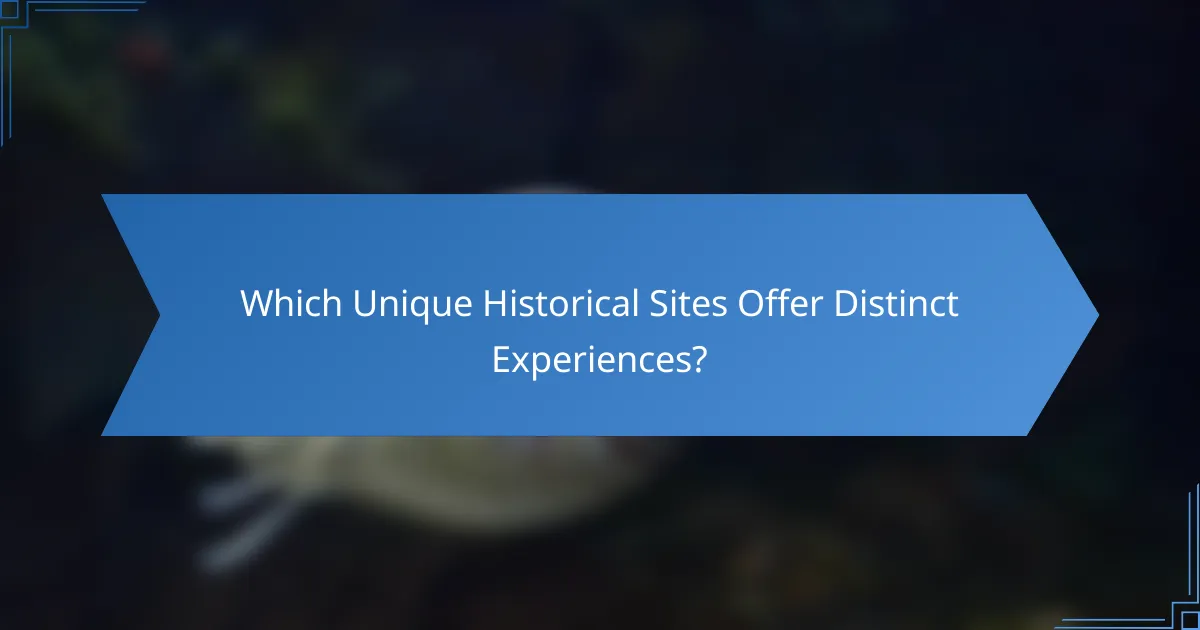
Which Unique Historical Sites Offer Distinct Experiences?
Greece’s historical sites offer unique experiences through their rich heritage, preservation efforts, and challenges in photography. The Acropolis in Athens provides breathtaking views and intricate architecture, while Delphi showcases ancient oracle practices. The Palace of Knossos reveals Minoan civilization secrets, and Meteora’s monasteries offer stunning landscapes and spiritual significance. Each site presents distinct narratives, attracting visitors seeking cultural immersion and photographic opportunities.
What Makes Each Site Stand Out?
Each historical site in Greece stands out due to its unique architectural style, cultural significance, and preservation challenges. The Acropolis, for example, symbolizes ancient democracy and faces ongoing restoration efforts. Delphi, a site of oracle worship, highlights the intersection of religion and philosophy. The Palace of Knossos showcases Minoan civilization’s advanced architecture but endures damage from natural disasters. Olympia, the birthplace of the Olympic Games, emphasizes athletic heritage and conservation issues. Each site presents distinct photography challenges due to varying accessibility and environmental conditions.
How Do Visitor Experiences Differ Across Regions?
Visitor experiences at historical sites in Greece vary significantly by region due to cultural, geographical, and preservation factors. In Athens, sites like the Acropolis attract tourists with rich historical narratives and accessibility. Conversely, the island of Crete offers less crowded, yet equally significant sites such as Knossos, where visitors can immerse themselves in Minoan history.
Preservation efforts also differ; regions like Delphi benefit from extensive restoration projects, enhancing visitor engagement. In contrast, some lesser-known sites face challenges with maintenance, affecting the overall experience. Photography opportunities also vary; urban sites provide iconic backdrops, while rural locations offer unique landscapes but may lack infrastructure for photographers.
These regional differences create diverse visitor experiences that reflect Greece’s multifaceted historical narrative.
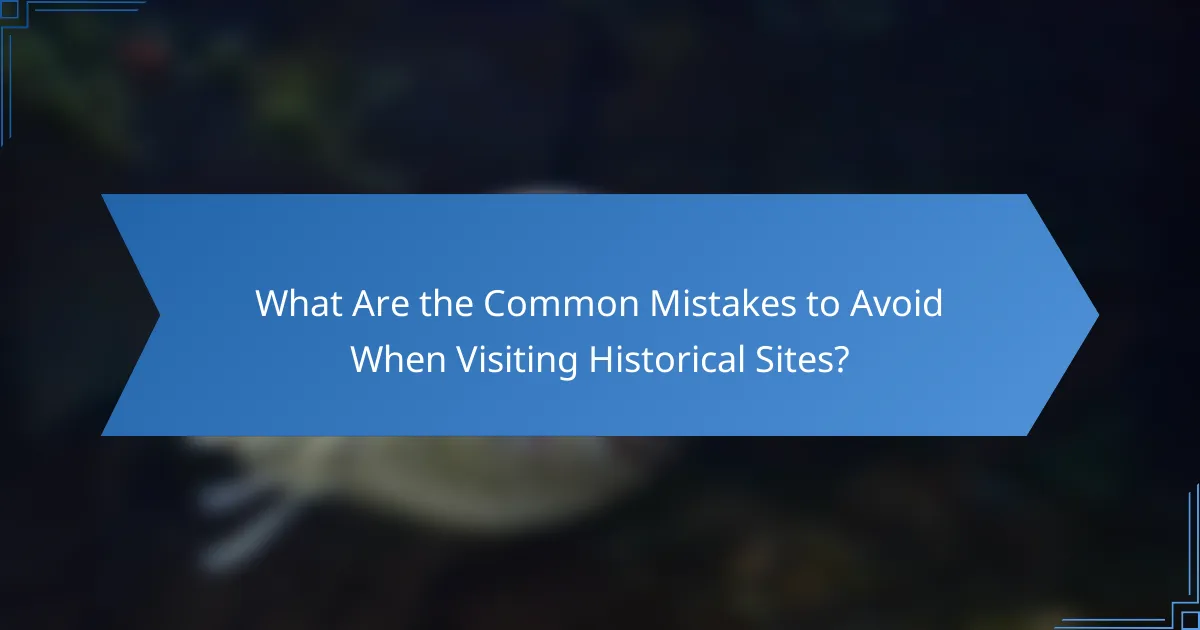
What Are the Common Mistakes to Avoid When Visiting Historical Sites?
To avoid common mistakes when visiting historical sites in Greece, prioritize respect for preservation and cultural significance. Visitors often overlook site rules, leading to damage or disturbances. Additionally, neglecting to plan for photography challenges can result in missed opportunities to capture the site’s beauty. Always check for restrictions on photography, especially in sacred areas. Finally, be mindful of local customs and etiquette to enhance your experience and show appreciation for the heritage.
How Can Visitors Respect the Sites While Enjoying Their Visit?
Visitors can respect historical sites in Greece by following guidelines that promote preservation. First, stick to designated paths to avoid damaging ancient structures. Second, refrain from touching or climbing on ruins, as this can cause wear. Third, limit photography to non-flash settings to protect artworks and artifacts. Fourth, maintain silence to preserve the site’s atmosphere and respect other visitors. Lastly, support local conservation efforts by choosing guided tours that prioritize sustainability. These actions help ensure that these significant cultural landmarks endure for future generations.
What Best Practices Can Enhance the Experience for Everyone?
Enhancing the experience at historical sites in Greece requires a focus on accessibility, education, and sustainable practices. Implementing guided tours that highlight significance fosters appreciation. Ensuring preservation through regular maintenance protects these sites for future generations. Encouraging responsible photography minimizes disruption while capturing the beauty of these locations. Engaging local communities in preservation efforts creates a sense of ownership and pride.